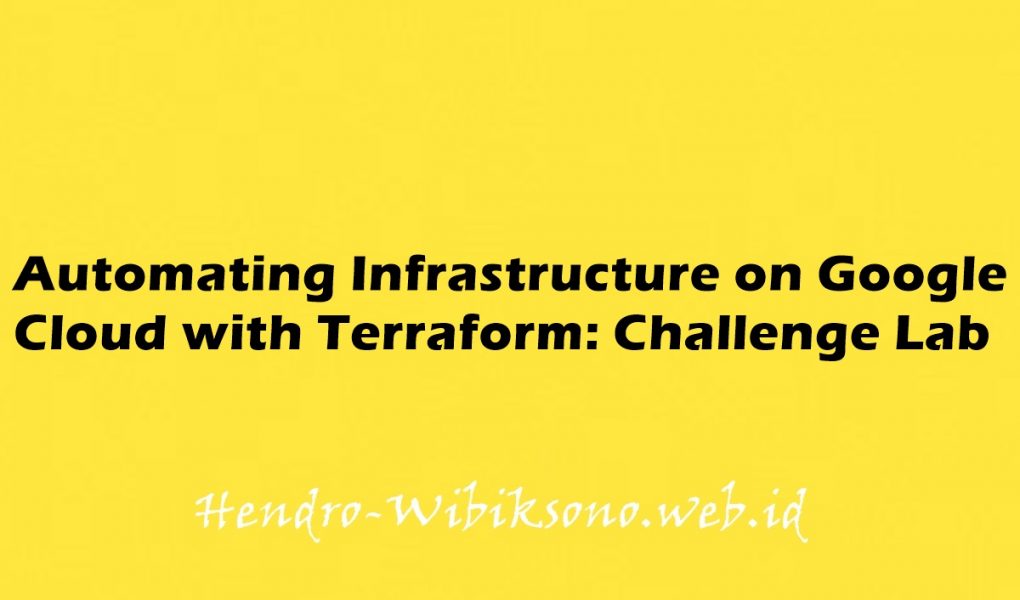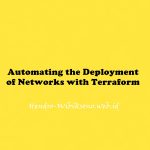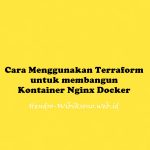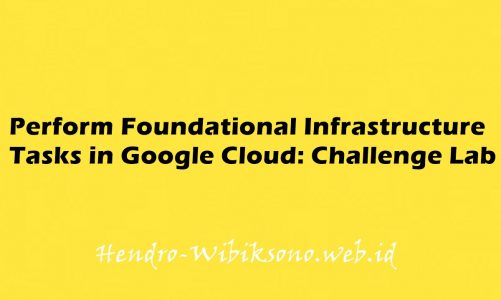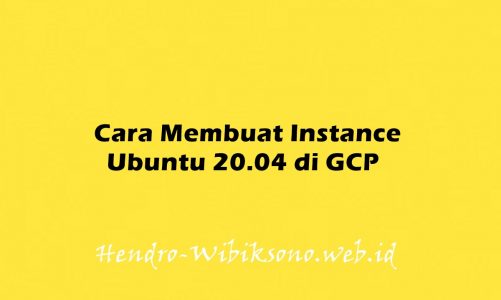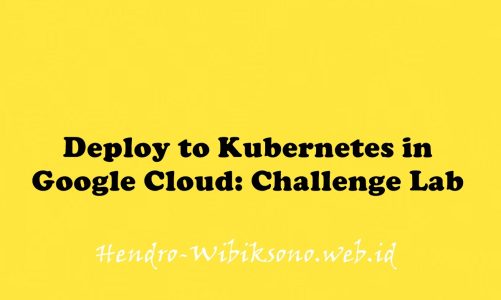“Automating Infrastructure on Google Cloud with Terraform: Challenge Lab”
Jawaban :
###################################################################################### ## Automating Infrastructure on Google Cloud with Terraform: Challenge Lab # GSP345 ## ###################################################################################### ====================== Setup : Create the configuration files ====================== Make the empty files and directories in Cloud Shell or the Cloud Shell Editor. ------------------------------------------------------------------------------------ touch main.tf touch variables.tf mkdir modules cd modules mkdir instances cd instances touch instances.tf touch outputs.tf touch variables.tf cd .. mkdir storage cd storage touch storage.tf touch outputs.tf touch variables.tf cd -------------------------------------------------------------------------------- Add the following to the each variables.tf file, and fill in the GCP Project ID: -------------------------------------------------------------------------------- variable "region" { default = "us-central1" } variable "zone" { default = "us-central1-a" } variable "project_id" { default = "<FILL IN PROJECT ID>" } ------------------------------------------ Add the following to the main.tf file : ------------------------------------------ terraform { required_providers { google = { source = "hashicorp/google" version = "3.55.0" } } } provider "google" { project = var.project_id region = var.region zone = var.zone } module "instances" { source = "./modules/instances" } --------------------------------------------------------------------------------- Run " terraform init " in Cloud Shell in the root directory to initialize terraform. --------------------------------------------------------------------------------- ====================== TASK 1: Import infrastructure ====================== Navigate to Compute Engine > VM Instances. Click on tf-instance-1. Copy the Instance ID down somewhere to use later. Navigate to Compute Engine > VM Instances. Click on tf-instance-2. Copy the Instance ID down somewhere to use later. Next, navigate to modules/instances/instances.tf. Copy the following configuration into the file: -------------------------------------------------------------- resource "google_compute_instance" "tf-instance-1" { name = "tf-instance-1" machine_type = "n1-standard-1" zone = "us-central1-a" boot_disk { initialize_params { image = "debian-cloud/debian-10" } } network_interface { network = "default" } metadata_startup_script = <<-EOT #!/bin/bash EOT allow_stopping_for_update = true } resource "google_compute_instance" "tf-instance-2" { name = "tf-instance-2" machine_type = "n1-standard-1" zone = "us-central1-a" boot_disk { initialize_params { image = "debian-cloud/debian-10" } } network_interface { network = "default" } metadata_startup_script = <<-EOT #!/bin/bash EOT allow_stopping_for_update = true } -------------------------------------------------------------------------------------------- To import the first instance, use the following command, using the Instance ID for tf-instance-1 you copied down earlier. ------------------------------------------------------------------------------------------ terraform import module.instances.google_compute_instance.tf-instance-1 <Instance ID - 1> ------------------------------------------------------------------------------------------ To import the second instance, use the following command, using the Instance ID for tf-instance-2 you copied down earlier. ------------------------------------------------------------------------------------------ terraform import module.instances.google_compute_instance.tf-instance-2 <Instance ID - 2> ------------------------------------------------------------------------------------------ The two instances have now been imported into your terraform configuration. You can now optionally run the commands to update the state of Terraform. Type yes at the dialogue after you run the apply command to accept the state changes. ---------------- terraform plan terraform apply ---------------- ====================== TASK 2: Configure a remote backend ====================== Add the following code to the modules/storage/storage.tf file: ------------------------------------------------------------------- resource "google_storage_bucket" "storage-bucket" { name = var.project_id location = "US" force_destroy = true uniform_bucket_level_access = true } ------------------------------------------------------------------- Next, add the following to the main.tf file: ------------------------------------------------------------------ module "storage" { source = "./modules/storage" } ---------------------------------------------------------------------------- Run the following commands to initialize the module and create the storage bucket resource. Type yes at the dialogue after you run the apply command to accept the state changes. ------------------------ terraform init terraform apply ------------------------ Next, update the main.tf file so that the terraform block looks like the following. Fill in your GCP Project ID for the bucket argument definition. ------------------------------------------- terraform { backend "gcs" { bucket = "<FILL IN PROJECT ID>" prefix = "terraform/state" } required_providers { google = { source = "hashicorp/google" version = "3.55.0" } } } -------------------------------------------- Run the following to initialize the remote backend. Type yes at the prompt. ---------------- terraform init ---------------- ====================== TASK 3: Modify and update infrastructure ====================== Navigate to modules/instances/instance.tf. Replace the entire contents of the file with the following: -------------------------------------------------------- resource "google_compute_instance" "tf-instance-1" { name = "tf-instance-1" machine_type = "n1-standard-2" zone = var.zone allow_stopping_for_update = true boot_disk { initialize_params { image = "debian-cloud/debian-10" } } network_interface { network = "default" } } resource "google_compute_instance" "tf-instance-2" { name = "tf-instance-2" machine_type = "n1-standard-2" zone = var.zone allow_stopping_for_update = true boot_disk { initialize_params { image = "debian-cloud/debian-10" } } network_interface { network = "default" } } resource "google_compute_instance" "tf-instance-3" { name = "tf-instance-3" machine_type = "n1-standard-2" zone = var.zone allow_stopping_for_update = true boot_disk { initialize_params { image = "debian-cloud/debian-10" } } network_interface { network = "default" } } -------------------------------------------------------------------------------------------------- Run the following commands to initialize the module and create/update the instance resources. Type yes at the dialogue after you run the apply command to accept the state changes. ---------------- terraform init terraform apply ---------------- ====================== TASK 4: Taint and destroy resources ====================== Taint the tf-instance-3 resource by running the following command: ------------------------------------------------------------------------ terraform taint module.instances.google_compute_instance.tf-instance-3 ------------------------------------------------------------------------ Run the following commands to apply the changes: ---------------- terraform init terraform apply ---------------- Remove the tf-instance-3 resource from the instances.tf file. Delete the following code chunk from the file. ----------------------------------------------------------- resource "google_compute_instance" "tf-instance-3" { name = "tf-instance-3" machine_type = "n1-standard-2" zone = var.zone allow_stopping_for_update = true boot_disk { initialize_params { image = "debian-cloud/debian-10" } } network_interface { network = "default" } } -------------------------------------------------------------------- Run the following commands to apply the changes. Type yes at the prompt. ---------------- terraform apply ---------------- ====================== TASK 5: Use a module from the Registry ====================== Copy and paste the following into the main.tf file: ---------------------------------------------------------------- module "vpc" { source = "terraform-google-modules/network/google" version = "~> 3.2.2" project_id = var.project_id network_name = "terraform-vpc" routing_mode = "GLOBAL" subnets = [ { subnet_name = "subnet-01" subnet_ip = "10.10.10.0/24" subnet_region = "us-central1" }, { subnet_name = "subnet-02" subnet_ip = "10.10.20.0/24" subnet_region = "us-central1" subnet_private_access = "true" subnet_flow_logs = "true" description = "This subnet has a description" } ] } ------------------------------------------------------------------------------- Run the following commands to initialize the module and create the VPC. Type yes at the prompt. --------------- terraform init terraform apply ---------------- Navigate to modules/instances/instances.tf. Replace the entire contents of the file with the following: ------------------------------------------------------- resource "google_compute_instance" "tf-instance-1" { name = "tf-instance-1" machine_type = "n1-standard-2" zone = var.zone allow_stopping_for_update = true boot_disk { initialize_params { image = "debian-cloud/debian-10" } } network_interface { network = "terraform-vpc" subnetwork = "subnet-01" } } resource "google_compute_instance" "tf-instance-2" { name = "tf-instance-2" machine_type = "n1-standard-2" zone = var.zone allow_stopping_for_update = true boot_disk { initialize_params { image = "debian-cloud/debian-10" } } network_interface { network = "terraform-vpc" subnetwork = "subnet-02" } } -------------------------------------------------------------------------------------------- Run the following commands to initialize the module and update the instances. Type yes at the prompt. --------------- terraform init terraform apply ---------------- ====================== TASK 6: Configure a firewall ====================== Add the following resource to the main.tf file and fill in the GCP Project ID: ------------------------------------------------------------------ resource "google_compute_firewall" "tf-firewall" { name = "tf-firewall" network = "projects/<PROJECT_ID>/global/networks/terraform-vpc" allow { protocol = "tcp" ports = ["80"] } source_tags = ["web"] source_ranges = ["0.0.0.0/0"] } ------------------------------------------------------------------------- Run the following commands to configure the firewall. Type yes at the prompt. --------------------- terraform init terraform apply ---------------------- ###################################################################################### ## Automating Infrastructure on Google Cloud with Terraform: Challenge Lab # GSP345 ## ######################################################################################
(Visited 2,620 times, 1 visits today)

